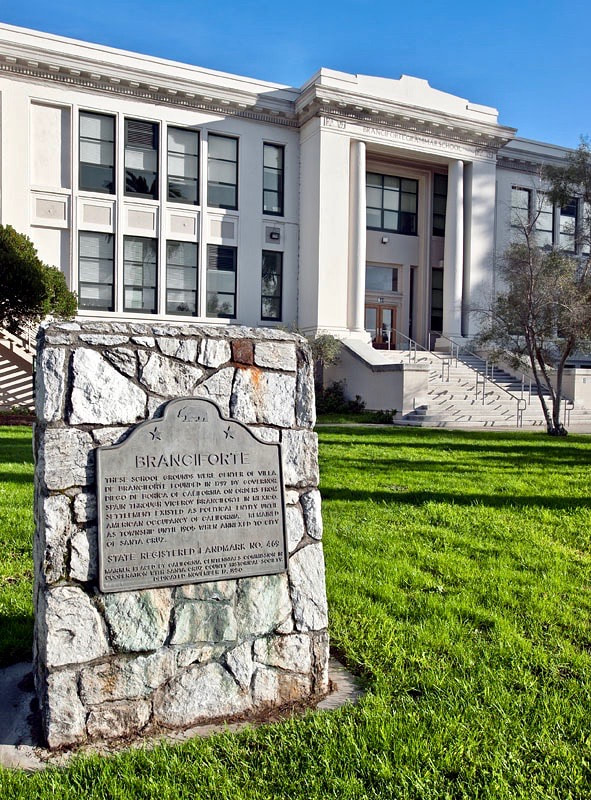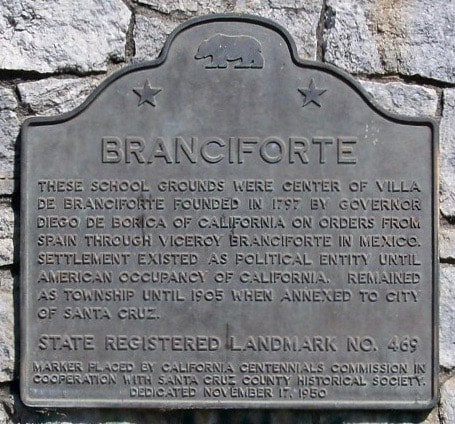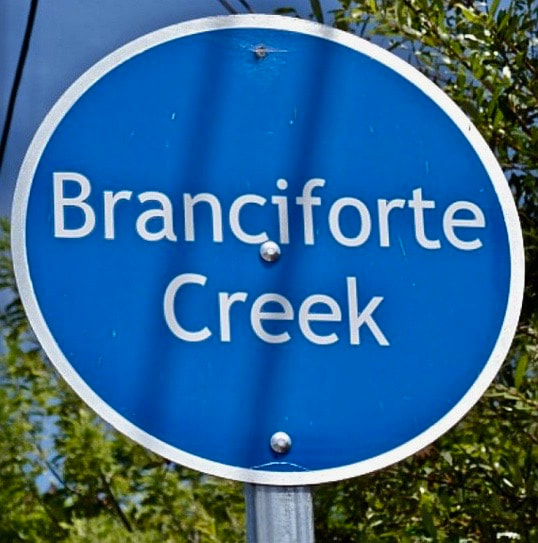The Hispanic-American History Timeline
1797 The Birth of Villa de Branciforte
|
Eight settlers from Guadalajara, New Spain, make an arduous journey to Alta California and are the first to establish a village that is to be called Villa de Branciforte.
The new town – now part of the City of Santa Cruz, California – is built on a bluff, facing Mission Santa Cruz, founded six year earlier on the other side of the San Lorenzo River. It is the result of Spain’s effort to protect its territories and influence in the New World. To prevent France, Russia and England from encroaching on Spanish territories, Spain decides that more towns need to be built and Alta California has to be populated by Spanish subjects. Following orders from the Spanish crown, New Spain’s Viceroy, Don Miguel de la Grúa Talamaca de Carini y Branciforte, orders the establishment of the new town. However, knowing that he would have to send new settlers to live in Alta California, and that it would be costly and difficult to populate the town, Viceroy Branciforte recruits residents of Guadalajara, by promising them money, land and the best adobe houses available. But when the first settlers arrive at the new village, they find that they have been mislead. The land is bare, abandoned, and has to be worked. The Viceroy’s promises never materialize. However, since trekking all the way back to Guadalajara is not a viable option, the settlers decide to make due with their limited tools and resources. They build a village without much help from Spain. Branciforte, an Italian military officer of Spanish nationality, serves as the 53rd Viceroy of New Spain, from 1794 to 1798, but never travels north to see the town. He is remembered by history as a very corrupt administrator. Nevertheless, although he has misled its colonists, Villa de Branciforte is named after him by Spanish California Diego de Borica, who has overseen the creation on the village. Unlike other Alta California Spanish settlements, especially Los Angeles and San Jose, the settlers of Villa de Branciforte receive little support from the Spanish crown, and the Catholic missions. While the Crown helps to support active Spanish soldiers and Franciscan missionaries, in forts and missions, the Villa Branciforte colonist are merchants, explorers and retired soldiers. And unlike other settlements and forts which receive some support from nearby missions, Villa de Branciforte gets little help from Misión Santa Cruz, on the west side of the San Lorenzo River, where the Franciscans see the new village as a threat. They fear that Native Americans living at the mission will be negatively influenced by the town’s decadence. But the people of Branciforte, determined to overcome these obstacles, as if defying the Spanish Crown’s neglect, develop a sense of belonging for their new hometown. In 1802, five years after its inception, the village’s total population is 107. And yet the settlers create a civil government and, in 1803, elect Jose Vicente Mojica as the first mayor of Villa de Branciforte. This is one of the first times elections are held in Alta California. When Mexico wins independence from Spain in 1821, and Alta California becomes part of Mexico; and again in 1848, when California becomes part of the United States, dramatic instability and changes affect the village. Villa de Branciforte becomes an American town. It functions a township until 1905, when the village is annexed to the City of Santa Cruz. Nowadays, Villa de Branciforte is known as East Santa Cruz. The Branciforte Small Schools Campus building now stands at was the center of Villa de Branciforte. But traces of the Villa still exist there. There is a creek, an avenue, a library, two schools, and an 18th century adobe house named Branciforte. There is a Branciforte Fire District. There is a Villa Branciforte Preservation Society seeking “recognition and preservation of the unique character and history of the Villa de Branciforte area,” according to its website. “This includes the preservation of historical landmarks, the "living history" and diversity of our local architecture with roots in the adobes of the Spanish Colonial period, and significant archaeological features, such as adobe foundations, adobe bricks, roof tiles, burial sites and other archaeological finds pertaining to the early inhabitants of Villa de Branciforte.” By Miguel Monsalvo, Lehman College |
To enlarge images, click on them!
|


















